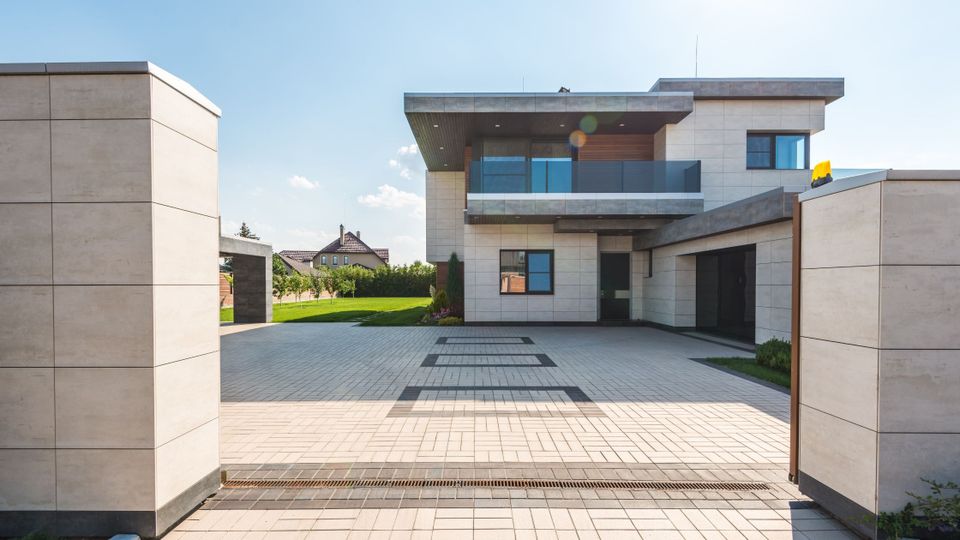

Concrete driveways, patios, and pathways aren't just functional additions to your home—they’re key design elements. They enhance your home’s curb appeal, boost property value, and deliver outstanding durability. Whether revamping your outdoor space or building new, concrete remains one of the most versatile and cost-effective materials for homeowners, landscapers, and property managers.
This guide explores how concrete can transform outdoor spaces, from modern concrete driveway designs to colorful patios and charming garden pathways. Need tips on maintenance or unsure whether concrete is the right fit? We’ve got everything you need to know right here.
This guide explores how concrete can transform outdoor spaces, from modern concrete driveway designs to colorful patios and charming garden pathways. Need tips on maintenance or unsure whether concrete is the right fit? We’ve got everything you need to know right here.
Asphalt vs Concrete Driveway: Which is Better for Your Home?
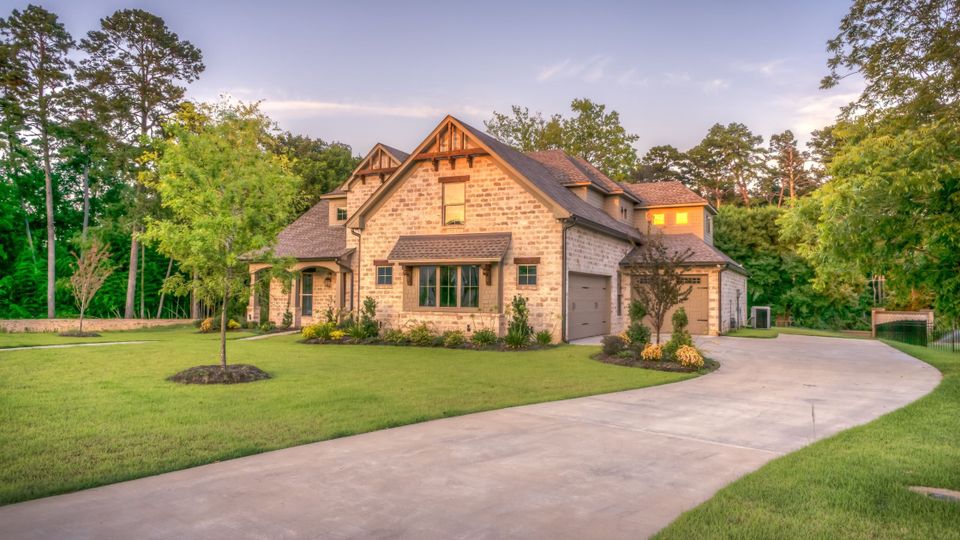
When deciding between an asphalt or concrete driveway, several essential factors must be evaluated, including longevity, cost, maintenance, and aesthetics. Each material has strengths and weaknesses; understanding these differences can help you make the best choice for your home and budget.
Asphalt driveways are often the more affordable option upfront, which makes them appealing to homeowners who need a cost-effective solution. They are quicker to install and have a smooth, dark finish that provides a clean, classic look. However, asphalt tends to have a shorter lifespan than concrete, often requiring resurfacing or replacement after 15 to 20 years, especially in areas with extreme weather conditions. Asphalt also needs regular maintenance, such as resealing every few years, to keep it in good condition and extend its usability.
Taking the time to weigh the pros and cons of each material thoroughly will help ensure you select the proper driveway for your specific needs, climate, and aesthetic preferences.
For a deeper breakdown of cost, durability, and environmental impact, head to this article.
Asphalt driveways are often the more affordable option upfront, which makes them appealing to homeowners who need a cost-effective solution. They are quicker to install and have a smooth, dark finish that provides a clean, classic look. However, asphalt tends to have a shorter lifespan than concrete, often requiring resurfacing or replacement after 15 to 20 years, especially in areas with extreme weather conditions. Asphalt also needs regular maintenance, such as resealing every few years, to keep it in good condition and extend its usability.
Residential Driveway Longevity
On the other hand, concrete driveways are known for their superior durability and longevity. With proper care and maintenance, a concrete residential driveway can last 30 years or more, making it a better long-term investment for many homeowners. While the initial cost of installing a concrete driveway is typically higher than asphalt, the reduced need for repairs and replacements over time often makes it more cost-effective in the long run.Taking the time to weigh the pros and cons of each material thoroughly will help ensure you select the proper driveway for your specific needs, climate, and aesthetic preferences.
For a deeper breakdown of cost, durability, and environmental impact, head to this article.
Creative Concrete Driveway Ideas to Elevate Your Curb Appeal

Your new driveway is often the first thing people notice when they approach your home, so why settle for plain, dull gray slabs when there are so many exciting and creative options available? Concrete driveways don’t have to be monotonous—they can be transformed into stunning focal points that enhance your home’s curb appeal. From stained finishes to intricate geometric patterns, concrete driveways offer incredible design possibilities for any style or taste.
Whether your goal is to make a bold statement or create a new driveway that harmonizes with your environment, the versatility of concrete allows you to customize it exactly to your liking. With the right design, your concrete driveway can be more than just a functional surface—it can become a key element of your home’s overall aesthetic.
Explore fresh and creative driveway options in this guide to make yours the envy of the neighborhood.
New Concrete Driveway Design Ideas
If you're looking for a practical and modern new driveway, polished concrete is a sleek, low-maintenance option that adds a sophisticated touch to your property. You can also consider adding bold borders or contrasting colors to define the edges and make your new driveway pop. On the other hand, if you prefer a more natural, earthy vibe, a stained concrete driveway can beautifully complement your home’s exterior while blending seamlessly with surrounding landscaping.Whether your goal is to make a bold statement or create a new driveway that harmonizes with your environment, the versatility of concrete allows you to customize it exactly to your liking. With the right design, your concrete driveway can be more than just a functional surface—it can become a key element of your home’s overall aesthetic.
Explore fresh and creative driveway options in this guide to make yours the envy of the neighborhood.
Designing with Stamped Concrete Driveways: Trends and Tips
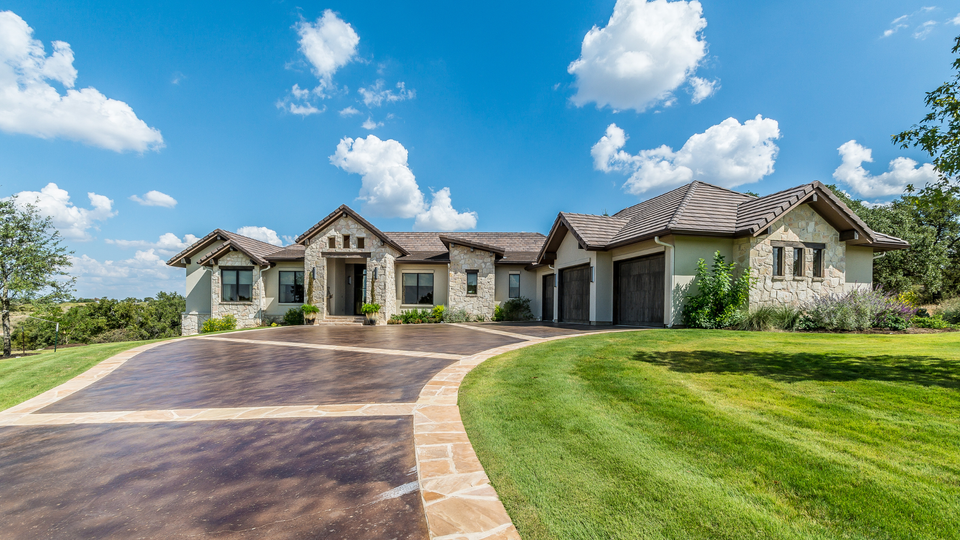
Stamped concrete is a highly versatile and cost-effective solution that offers an ideal combination of durability, practicality, and aesthetic appeal. Unlike traditional concrete, which is often plain and utilitarian in appearance, this type of concrete elevates the look of outdoor spaces by mimicking the beauty of natural materials such as stone, brick, tile, cobblestone, slate, and even wood. This makes it a popular choice for homeowners who want to achieve a high-end, sophisticated look without exceeding their budget.
Beyond their visual appeal, stamped concrete driveways provide a host of practical advantages. They are incredibly strong and durable, able to withstand heavy traffic and weather extremes, ensuring they remain in excellent condition for years. Additionally, they require minimal maintenance compared to natural stone or wood, often requiring frequent sealing, repairs, or refinishing.
Whether upgrading an existing space or starting fresh with a new project, stamped concrete driveways offer an ideal solution for homeowners seeking a blend of beauty, durability, and affordability. It’s a practical choice for commercial and residential driveways, patios, and walkways.
Did you know? Stamped concrete designs not only look stunning, but they’re also skid-resistant when appropriately sealed, making them safer for both residents and vehicles.
Curious about the latest trends? Check out this article for expert tips and patterns that are on-trend this year.
Beyond their visual appeal, stamped concrete driveways provide a host of practical advantages. They are incredibly strong and durable, able to withstand heavy traffic and weather extremes, ensuring they remain in excellent condition for years. Additionally, they require minimal maintenance compared to natural stone or wood, often requiring frequent sealing, repairs, or refinishing.
Whether upgrading an existing space or starting fresh with a new project, stamped concrete driveways offer an ideal solution for homeowners seeking a blend of beauty, durability, and affordability. It’s a practical choice for commercial and residential driveways, patios, and walkways.
Did you know? Stamped concrete designs not only look stunning, but they’re also skid-resistant when appropriately sealed, making them safer for both residents and vehicles.
Curious about the latest trends? Check out this article for expert tips and patterns that are on-trend this year.
Stamped Concrete Patio Ideas to Transform Your Outdoor Space
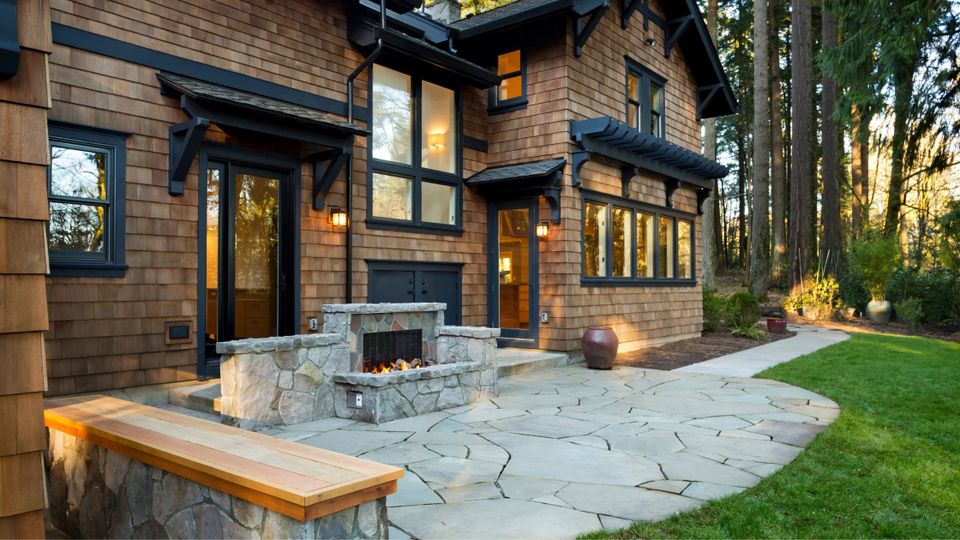
Your patio is more than just an outdoor space—it’s an extension of your lifestyle and a reflection of your home’s unique personality. It’s where you host family get-togethers, enjoy quiet mornings with coffee, or gather with friends on warm summer evenings. Why not make this space as beautiful and functional as the rest of your home? With this type of concrete patio design, you can completely transform your outdoor area into something special, tailored to your style and preferences.
Stamped concrete offers possibilities for adding character and charm to your patio. This versatile material can blend seamlessly with your home’s surroundings by incorporating natural tones, creating a harmonious connection between indoor and outdoor spaces.
You can also choose custom patterns and textures that perfectly complement your home’s architecture, making your patio a cohesive part of your property. Whether your style leans toward sleek, modern designs or classic, traditional aesthetics, stamped concrete offers endless design options to suit your taste.
You can opt for intricate patterns like herringbone, slate, cobblestone, or even wood-grain textures that mimic natural materials for luxury and sophistication. These details can elevate your patio's overall look and feel, making it a stunning focal point of your outdoor space.
Quick tip: When selecting a finish for your stamped concrete patio, consider its exposure to sunlight. Lighter tones reflect heat, keeping the area more comfortable!
Discover stunning patio transformations in this article and get inspired for your backyard makeover.
Stamped concrete offers possibilities for adding character and charm to your patio. This versatile material can blend seamlessly with your home’s surroundings by incorporating natural tones, creating a harmonious connection between indoor and outdoor spaces.
You can also choose custom patterns and textures that perfectly complement your home’s architecture, making your patio a cohesive part of your property. Whether your style leans toward sleek, modern designs or classic, traditional aesthetics, stamped concrete offers endless design options to suit your taste.
You can opt for intricate patterns like herringbone, slate, cobblestone, or even wood-grain textures that mimic natural materials for luxury and sophistication. These details can elevate your patio's overall look and feel, making it a stunning focal point of your outdoor space.
Quick tip: When selecting a finish for your stamped concrete patio, consider its exposure to sunlight. Lighter tones reflect heat, keeping the area more comfortable!
Discover stunning patio transformations in this article and get inspired for your backyard makeover.
Enhancing Your Patio with Stained Concrete: A Colorful Guide
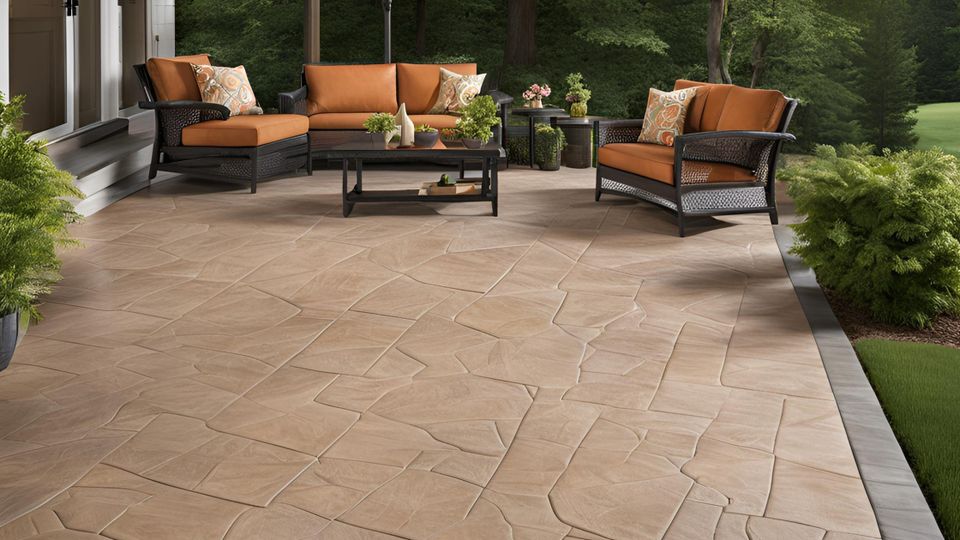
Want your patio to stand out and become the talk of the neighborhood? Stained concrete is an excellent way to transform your outdoor space with vibrant, long-lasting colors that won’t fade or lose appeal over time. Unlike traditional paint or surface coatings, which sit on top and are prone to peeling, chipping, or wearing away, stained concrete penetrates deeply into the surface. This ensures rich, consistent, eye-catching hues that maintain their beauty for years, even in harsh outdoor conditions.
The best part? Stained concrete offers various design options to suit every taste and style. Whether you’re drawn to subtle earth tones that blend seamlessly with natural surroundings or bold, striking shades that create a contemporary vibe, the possibilities are endless. You can choose single colors for a clean, minimalist aesthetic or combine hues for custom designs and patterns, adding a unique dimension to your space.
Beyond its visual appeal, stained concrete is also a practical choice for patios. It’s durable, low-maintenance, and highly resistant to wear and tear, making it ideal for outdoor areas that experience heavy foot traffic or exposure to the elements. It’s also a wise investment, as it boosts your home's overall value and charm while requiring minimal upkeep compared to other materials like wood or stone.
Worried about uniformity? Don’t be—concrete staining adds natural variations, transforming your patio into a unique, eye-catching masterpiece. Learn more about colors, techniques, and maintenance in this article.
The best part? Stained concrete offers various design options to suit every taste and style. Whether you’re drawn to subtle earth tones that blend seamlessly with natural surroundings or bold, striking shades that create a contemporary vibe, the possibilities are endless. You can choose single colors for a clean, minimalist aesthetic or combine hues for custom designs and patterns, adding a unique dimension to your space.
Beyond its visual appeal, stained concrete is also a practical choice for patios. It’s durable, low-maintenance, and highly resistant to wear and tear, making it ideal for outdoor areas that experience heavy foot traffic or exposure to the elements. It’s also a wise investment, as it boosts your home's overall value and charm while requiring minimal upkeep compared to other materials like wood or stone.
Worried about uniformity? Don’t be—concrete staining adds natural variations, transforming your patio into a unique, eye-catching masterpiece. Learn more about colors, techniques, and maintenance in this article.
The Beauty of Broom Finish Concrete for Outdoor Surfaces
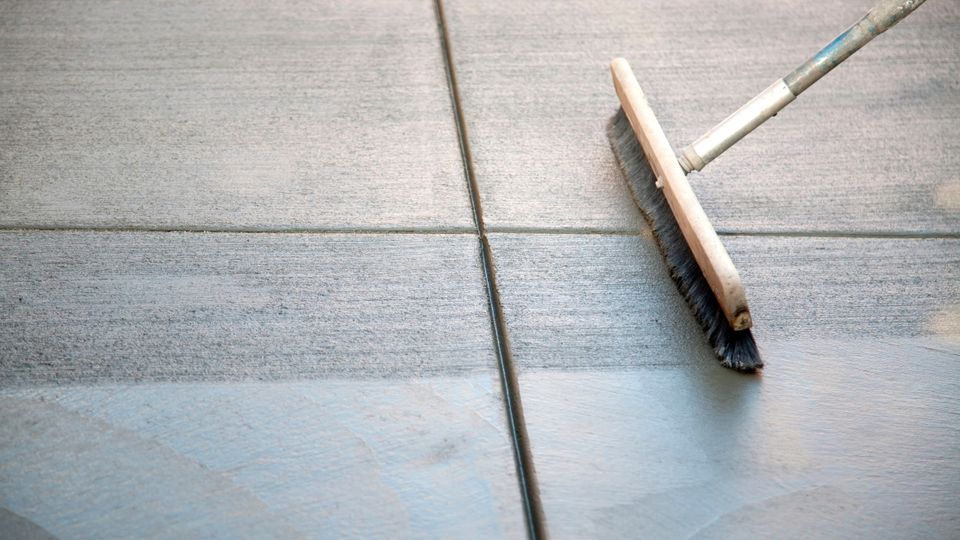
Sometimes, simplicity makes the boldest and most timeless statement. A broom finish exemplifies this idea, offering a classic and elegant choice for outdoor surfaces that perfectly balances functionality with aesthetic appeal. This timeless technique involves dragging a broom across freshly poured concrete, creating fine, uniform lines that provide texture and visual interest. This process results in a clean, understated design that complements various outdoor styles and offers numerous practical benefits, making it a popular choice for driveways, walkways, patios, and other outdoor areas.
One of the key advantages of a broom finish is its superior traction. The textured surface significantly reduces the risk of slips and falls, especially in wet or icy conditions, making it an incredibly safe and reliable option for high-traffic areas. This feature is particularly valuable for families with children, the elderly, or for businesses that prioritize safety for their customers and employees. Unlike smoother finishes, which can become dangerously slick when wet, a broom finish ensures that outdoor spaces remain accessible and secure in all weather conditions.
Beyond its safety benefits, a broom finish is also highly durable and low-maintenance. Outdoor surfaces are constantly exposed to the elements—rain, snow, heat, and heavy foot or vehicle traffic can take a toll over time. However, the broom finish is designed to withstand these challenges, ensuring a long-lasting, dependable surface that requires minimal upkeep. Its rugged texture helps hide minor imperfections, dirt, and wear, keeping your outdoor spaces clean and polished for years.
Another reason the broom finish remains a popular choice is its cost-effectiveness. Compared to more intricate or decorative concrete finishes, the broom finish is relatively affordable, making it accessible for residential and commercial projects. Its straightforward application process saves labor costs and ensures a faster project turnaround, allowing you to enjoy your newly upgraded outdoor spaces sooner.
Prefer function over flash? A broom finish may be your perfect match. Dig deeper into its benefits in this guide.
One of the key advantages of a broom finish is its superior traction. The textured surface significantly reduces the risk of slips and falls, especially in wet or icy conditions, making it an incredibly safe and reliable option for high-traffic areas. This feature is particularly valuable for families with children, the elderly, or for businesses that prioritize safety for their customers and employees. Unlike smoother finishes, which can become dangerously slick when wet, a broom finish ensures that outdoor spaces remain accessible and secure in all weather conditions.
Beyond its safety benefits, a broom finish is also highly durable and low-maintenance. Outdoor surfaces are constantly exposed to the elements—rain, snow, heat, and heavy foot or vehicle traffic can take a toll over time. However, the broom finish is designed to withstand these challenges, ensuring a long-lasting, dependable surface that requires minimal upkeep. Its rugged texture helps hide minor imperfections, dirt, and wear, keeping your outdoor spaces clean and polished for years.
Another reason the broom finish remains a popular choice is its cost-effectiveness. Compared to more intricate or decorative concrete finishes, the broom finish is relatively affordable, making it accessible for residential and commercial projects. Its straightforward application process saves labor costs and ensures a faster project turnaround, allowing you to enjoy your newly upgraded outdoor spaces sooner.
Prefer function over flash? A broom finish may be your perfect match. Dig deeper into its benefits in this guide.
Designing Pathways: Concrete Walkway Ideas for Your Garden
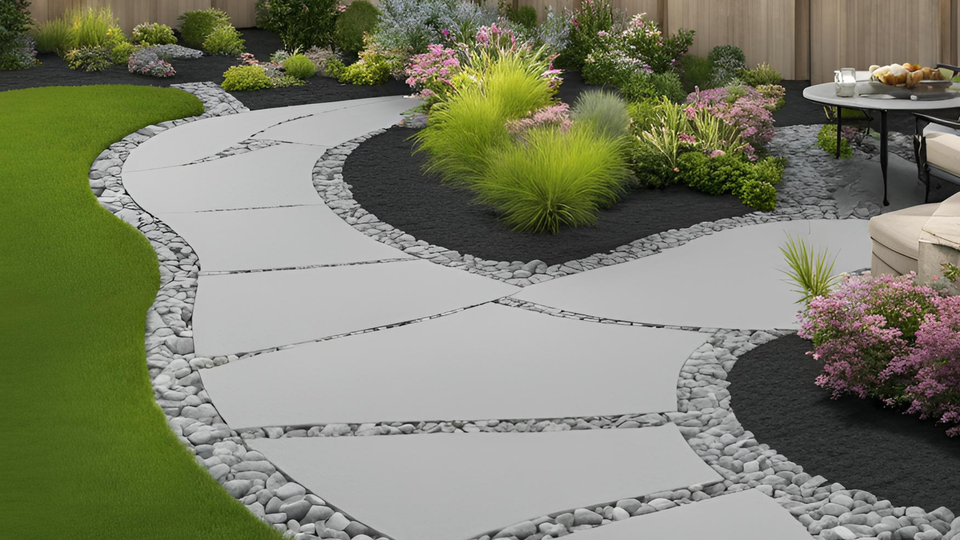
A concrete walkway is more than just a functional addition to your garden—it’s a stylish and versatile feature that can significantly enhance the charm, usability, and overall aesthetic of your outdoor space. It serves as a practical guide for guests and a design element that ties your landscaping together. Whether you’re envisioning a winding path that gracefully meanders through vibrant flower beds or a more structured walkway leading directly to your patio or front door, concrete offers endless opportunities for customization.
One of the most appealing aspects of concrete walkways is their ability to be tailored to fit the unique character of your garden. For a natural, organic feel, you can incorporate gentle curves into the design, creating a pathway that flows harmoniously with the contours of your landscaping. Curved walkways can mimic the feel of a forest trail, inviting an element of serenity and connection to nature.
On the other hand, if your garden or outdoor space leans toward a modern or minimalist aesthetic, a structured, straight-edged concrete path might be a better fit. Adding geometric shapes or grids with smooth concrete pavers can create a sleek, contemporary look that complements clean architectural lines.
Functionality is another key strength of concrete walkways. Concrete is an incredibly durable material, capable of withstanding heavy foot traffic, extreme weather conditions, and years of wear and tear. Unlike other materials, such as gravel or wood, concrete requires minimal maintenance and can last for decades, making it a cost-effective investment for any homeowner.
For additional safety and accessibility, you can integrate anti-slip treatments or lighting elements along the pathway, ensuring it remains easy to navigate, even at night or during wet conditions.
Looking for creative ideas to upgrade your garden pathways? This article has all you need to know.
One of the most appealing aspects of concrete walkways is their ability to be tailored to fit the unique character of your garden. For a natural, organic feel, you can incorporate gentle curves into the design, creating a pathway that flows harmoniously with the contours of your landscaping. Curved walkways can mimic the feel of a forest trail, inviting an element of serenity and connection to nature.
On the other hand, if your garden or outdoor space leans toward a modern or minimalist aesthetic, a structured, straight-edged concrete path might be a better fit. Adding geometric shapes or grids with smooth concrete pavers can create a sleek, contemporary look that complements clean architectural lines.
Functionality is another key strength of concrete walkways. Concrete is an incredibly durable material, capable of withstanding heavy foot traffic, extreme weather conditions, and years of wear and tear. Unlike other materials, such as gravel or wood, concrete requires minimal maintenance and can last for decades, making it a cost-effective investment for any homeowner.
For additional safety and accessibility, you can integrate anti-slip treatments or lighting elements along the pathway, ensuring it remains easy to navigate, even at night or during wet conditions.
Looking for creative ideas to upgrade your garden pathways? This article has all you need to know.
Best Practices for Sealing Concrete Driveways: Protection and Maintenance

Sealing your concrete driveway is a crucial and often overlooked step in protecting and preserving one of the most important features of your property. Concrete driveways are exposed to harsh conditions daily, including fluctuating temperatures, rain, snow, UV rays, and the wear and tear caused by vehicles and foot traffic. Over time, these factors can weaken the surface, leading to cracks, erosion, and other forms of damage. A high-quality sealant creates a strong protective barrier that shields the driveway from these elements, minimizing the risk of structural damage and extending its lifespan significantly.
Sealing your new concrete driveway installation protects against environmental factors, as well as chemical spills, oil leaks, and other substances that could stain or deteriorate the surface. This is especially important for those who frequently work on their vehicles or use their driveway for activities that might introduce harmful substances. By sealing the driveway, you can prevent these materials from seeping into the concrete and causing permanent discoloration or damage.
Beyond protection, sealing your new concrete driveway installation also enhances its appearance. A sealed concrete driveway retains its clean, well-maintained look by preventing unsightly discoloration and preserving its original finish. This can greatly improve your home's curb appeal, making it more attractive and inviting. Additionally, maintaining a sealed surface can reduce the frequency and cost of repairs over time, as the driveway remains more resilient to wear and damage.
Did you know? Sealing can increase your new concrete driveway’s durability by up to 50%, ensuring it withstands heavy use and harsh climates.
For a step-by-step guide on sealing and product recommendations, head to this article.
Sealing your new concrete driveway installation protects against environmental factors, as well as chemical spills, oil leaks, and other substances that could stain or deteriorate the surface. This is especially important for those who frequently work on their vehicles or use their driveway for activities that might introduce harmful substances. By sealing the driveway, you can prevent these materials from seeping into the concrete and causing permanent discoloration or damage.
Beyond protection, sealing your new concrete driveway installation also enhances its appearance. A sealed concrete driveway retains its clean, well-maintained look by preventing unsightly discoloration and preserving its original finish. This can greatly improve your home's curb appeal, making it more attractive and inviting. Additionally, maintaining a sealed surface can reduce the frequency and cost of repairs over time, as the driveway remains more resilient to wear and damage.
Did you know? Sealing can increase your new concrete driveway’s durability by up to 50%, ensuring it withstands heavy use and harsh climates.
For a step-by-step guide on sealing and product recommendations, head to this article.
FAQs
Q: How long does a concrete pour typically take?
A: The duration of a concrete pour depends on various factors, such as the size of the project and the number of concrete trucks involved. Generally, a typical residential concrete pour can take several hours to complete.
Q: What are concrete trucks, and how do they contribute to the pouring process?
A: Concrete or mixer trucks, are vehicles specifically designed for transporting and mixing concrete. They play a crucial role in pouring by delivering the freshly mixed concrete directly to the construction site, ensuring efficient and timely placement.
Q: What is the process of pouring concrete?
A: Pouring concrete involves several steps, including preparing the site, placing forms to contain the concrete, mixing the concrete mixture, and pouring and leveling the concrete into the designated area. Finally, the concrete is left to cure and harden.
Q: What is crushed concrete, and how is it used in construction?
A: Crushed concrete is a recycled material obtained by crushing old concrete into various sizes. It is commonly used as a base material for roads, driveways, and walkways. Its utilization helps reduce waste and provides a cost-effective and environmentally friendly alternative to traditional aggregates.
Q: What is a concrete mixture?
A: A concrete mixture combines cement, aggregates (such as sand and crushed stone), water, and sometimes additives in appropriate proportions. This mixture is carefully designed to achieve the desired strength, workability, and durability of the concrete for different construction applications.
A: The duration of a concrete pour depends on various factors, such as the size of the project and the number of concrete trucks involved. Generally, a typical residential concrete pour can take several hours to complete.
Q: What are concrete trucks, and how do they contribute to the pouring process?
A: Concrete or mixer trucks, are vehicles specifically designed for transporting and mixing concrete. They play a crucial role in pouring by delivering the freshly mixed concrete directly to the construction site, ensuring efficient and timely placement.
Q: What is the process of pouring concrete?
A: Pouring concrete involves several steps, including preparing the site, placing forms to contain the concrete, mixing the concrete mixture, and pouring and leveling the concrete into the designated area. Finally, the concrete is left to cure and harden.
Q: What is crushed concrete, and how is it used in construction?
A: Crushed concrete is a recycled material obtained by crushing old concrete into various sizes. It is commonly used as a base material for roads, driveways, and walkways. Its utilization helps reduce waste and provides a cost-effective and environmentally friendly alternative to traditional aggregates.
Q: What is a concrete mixture?
A: A concrete mixture combines cement, aggregates (such as sand and crushed stone), water, and sometimes additives in appropriate proportions. This mixture is carefully designed to achieve the desired strength, workability, and durability of the concrete for different construction applications.
Why Concrete Is the Upgrade Your Outdoor Space Needs
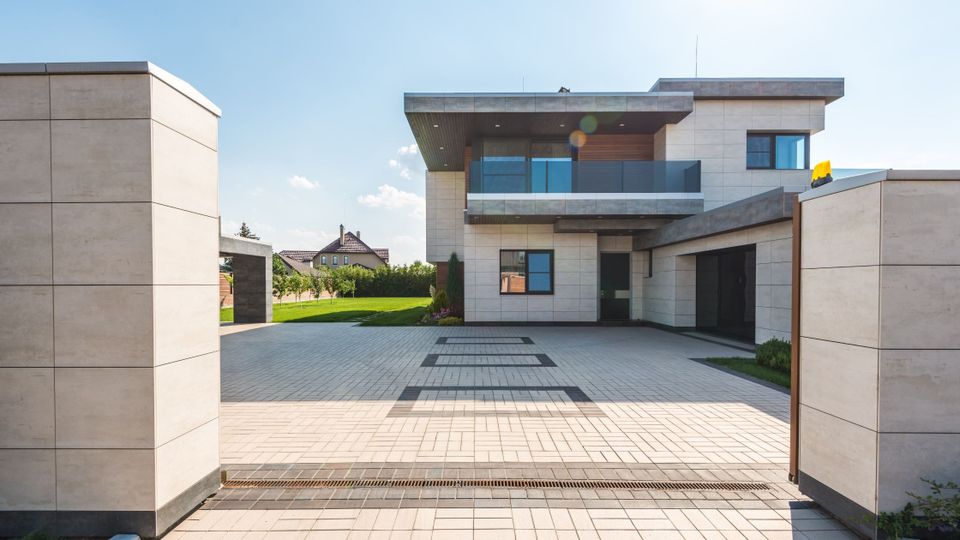
Concrete driveways, patios, and walkways are durable, transformational, and versatile. They offer endless possibilities, whether to boost your home’s curb appeal, create a safer environment for your family and visitors, or add a personal touch to your outdoor space.
With its ability to be customized in terms of color, texture, and style, concrete can complement any design aesthetic while providing long-lasting performance. Whether it's a sleek modern concrete driveway, a beautifully stamped patio, or a functional walkway, concrete can effortlessly elevate the look and functionality of your outdoor areas.
Looking for concrete contractors to bring your vision to life? Visit our concrete experts at Zenture Solutions to explore services tailored to your needs.
With its ability to be customized in terms of color, texture, and style, concrete can complement any design aesthetic while providing long-lasting performance. Whether it's a sleek modern concrete driveway, a beautifully stamped patio, or a functional walkway, concrete can effortlessly elevate the look and functionality of your outdoor areas.
Looking for concrete contractors to bring your vision to life? Visit our concrete experts at Zenture Solutions to explore services tailored to your needs.
